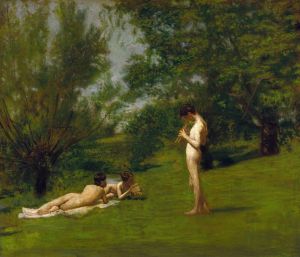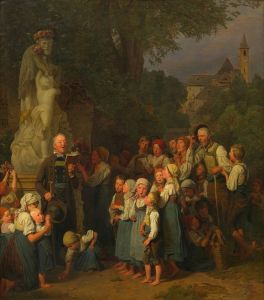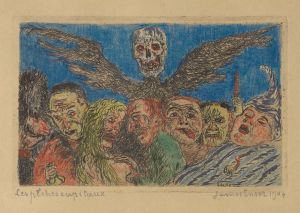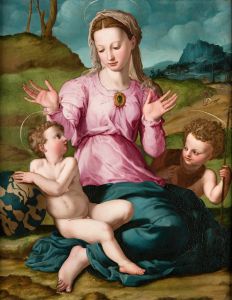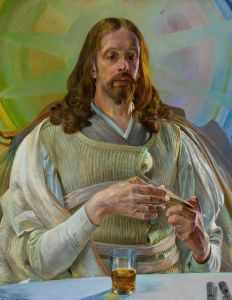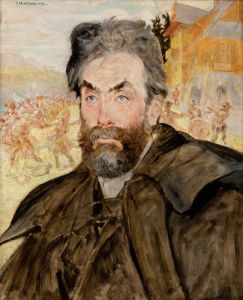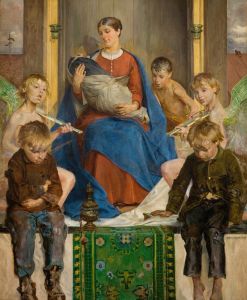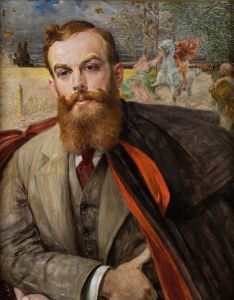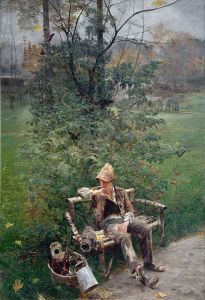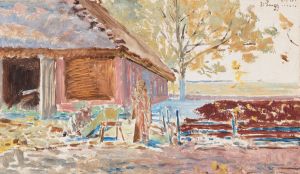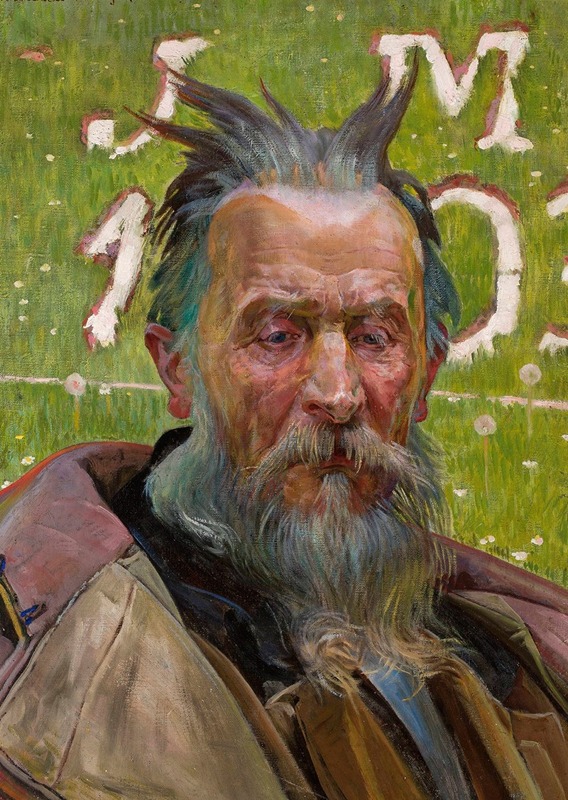
Moses
A hand-painted replica of Jacek Malczewski’s masterpiece Moses, meticulously crafted by professional artists to capture the true essence of the original. Each piece is created with museum-quality canvas and rare mineral pigments, carefully painted by experienced artists with delicate brushstrokes and rich, layered colors to perfectly recreate the texture of the original artwork. Unlike machine-printed reproductions, this hand-painted version brings the painting to life, infused with the artist’s emotions and skill in every stroke. Whether for personal collection or home decoration, it instantly elevates the artistic atmosphere of any space.
Jacek Malczewski, a prominent Polish painter and one of the leading figures of the Symbolist movement, created the painting Moses in 1907. This work is an example of Malczewski's characteristic style, which often combined elements of Polish history, mythology, and religious themes with Symbolist aesthetics. Malczewski's art frequently reflected his deep engagement with national identity and spiritual questions, and Moses is no exception.
The painting depicts the biblical figure Moses, a central prophet in Judaism, Christianity, and Islam, who is traditionally associated with leading the Israelites out of Egypt and receiving the Ten Commandments on Mount Sinai. In Malczewski's interpretation, Moses is portrayed in a contemplative pose, holding the stone tablets of the commandments. The figure of Moses is rendered with a sense of solemnity and strength, emphasizing his role as a leader and lawgiver.
Malczewski's Moses is notable for its Symbolist approach, which moves beyond a literal representation of the biblical story. The painting incorporates allegorical and metaphorical elements, inviting viewers to reflect on broader themes such as faith, morality, and the human condition. The use of light and shadow, as well as the rich, earthy color palette, contributes to the painting's evocative atmosphere.
As with many of Malczewski's works, Moses can also be interpreted in the context of Polish history and culture. During the time of its creation, Poland was partitioned and under the control of foreign powers. Malczewski often used biblical and mythological figures to comment on the struggles and aspirations of the Polish people. While the painting does not explicitly reference Poland, the figure of Moses as a leader guiding his people to freedom may have resonated with contemporary audiences as a symbol of hope and resilience.
The painting is housed in the National Museum in Warsaw, Poland, where it remains an important part of the collection. It is regarded as a significant example of Malczewski's work and of Polish Symbolism more broadly. Through Moses, Malczewski demonstrates his ability to blend religious and historical themes with a deeply personal and nationalistic perspective, creating a work that continues to inspire and provoke thought.






